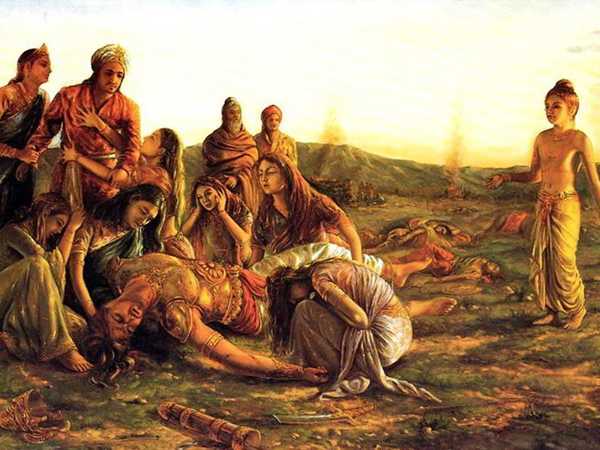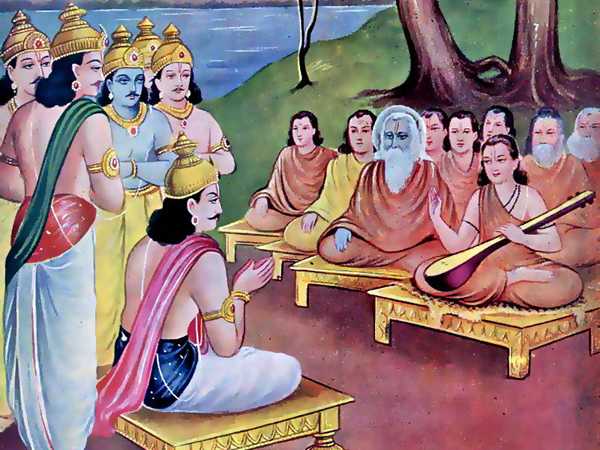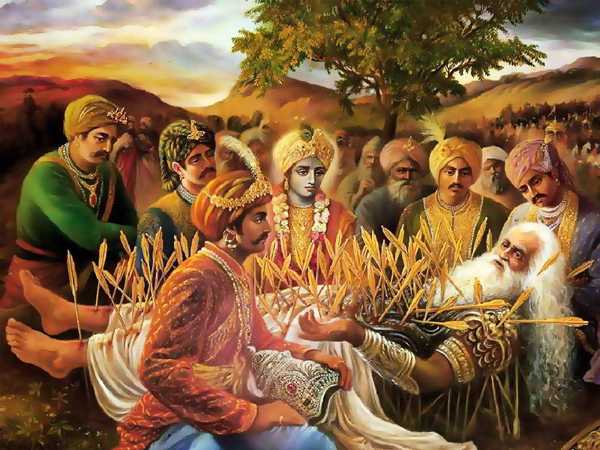Chapter 5

“Dhritarashtra said,–‘The names of rivers and mountains, O Sanjaya, asalso of provinces, and all other things resting on the earth, and theirdimensions, O thou that are acquainted with the measures of things of theearth in its entirety and the forests, O Sanjaya, recount to me indetail.’
“Sanjaya said,–‘O great king, all things in the universe, in consequenceof the presence (in them) of the five elements, have been said to beequal by the wise. These elements, are space, air, fire, water, andearth. Their (respective) attributes are sound, touch, vision, taste, andscent. Every one of these elements possesses (in addition to what isespecially its own) the attribute or attributes of that or those comingbefore it. The earth, therefore, is the foremost of them all, possessingas it does the attributes of all the other four, besides what isspecially its own, as said by Rishis acquainted with truth.[32] There arefour attributes, O king, in water. Scent does not exist in it. Fire hasthree attributes viz., sound, touch, and vision. Sound and touch belongto air, while space has sound alone. These five attributes, O king, exist(in this way) in the five principal elements depending on which allcreatures in the universe exist. They exist separately and independentlywhen there is homogeneity in the universe.[33] When, however, these donot exist in their natural state but with one another, then creaturesspring into life, furnished with bodies. This is never otherwise. Theelements are destroyed, in the order of the one succeeding, merging intothe one that proceeds; and they spring also into existence, one arisingfrom the one before it.[34] All of these are immeasurable, their formsbeing Brahma itself. In the universe are seen creatures consisting of thefive elements. Men endeavour to ascertain their proportions by exercisingtheir reason. Those matters, however, that are inconceivable, shouldnever be sought to be solved by reason. That which is above (human)nature is an indication of the inconceivable.
“‘O son of Kuru’s race, I will, however, describe to thee the islandcalled Sudarsana. This island, O king, is circular and of the form of awheel. It is covered with rivers and other pieces of water and withmountains looking like masses of clouds, and with cities and manydelightful provinces. It is also full of trees furnished with flowers andfruits, and with crops of diverse kinds and other wealth. And it issurrounded on all sides with the salt ocean. As a person can see his ownface in a mirror, even so is the island called Sudarsana seen in thelunar disc. Two of its parts seem to be a peepul tree, while two otherslook like a large hare. It is surrounded on all sides with an assemblageof every kind of deciduous plants. Besides these portions, the rest isall water. What remains I will describe to thee shortly. The rest I willspeak of afterwards. Listen now to this that I describe in brief.[35]”



